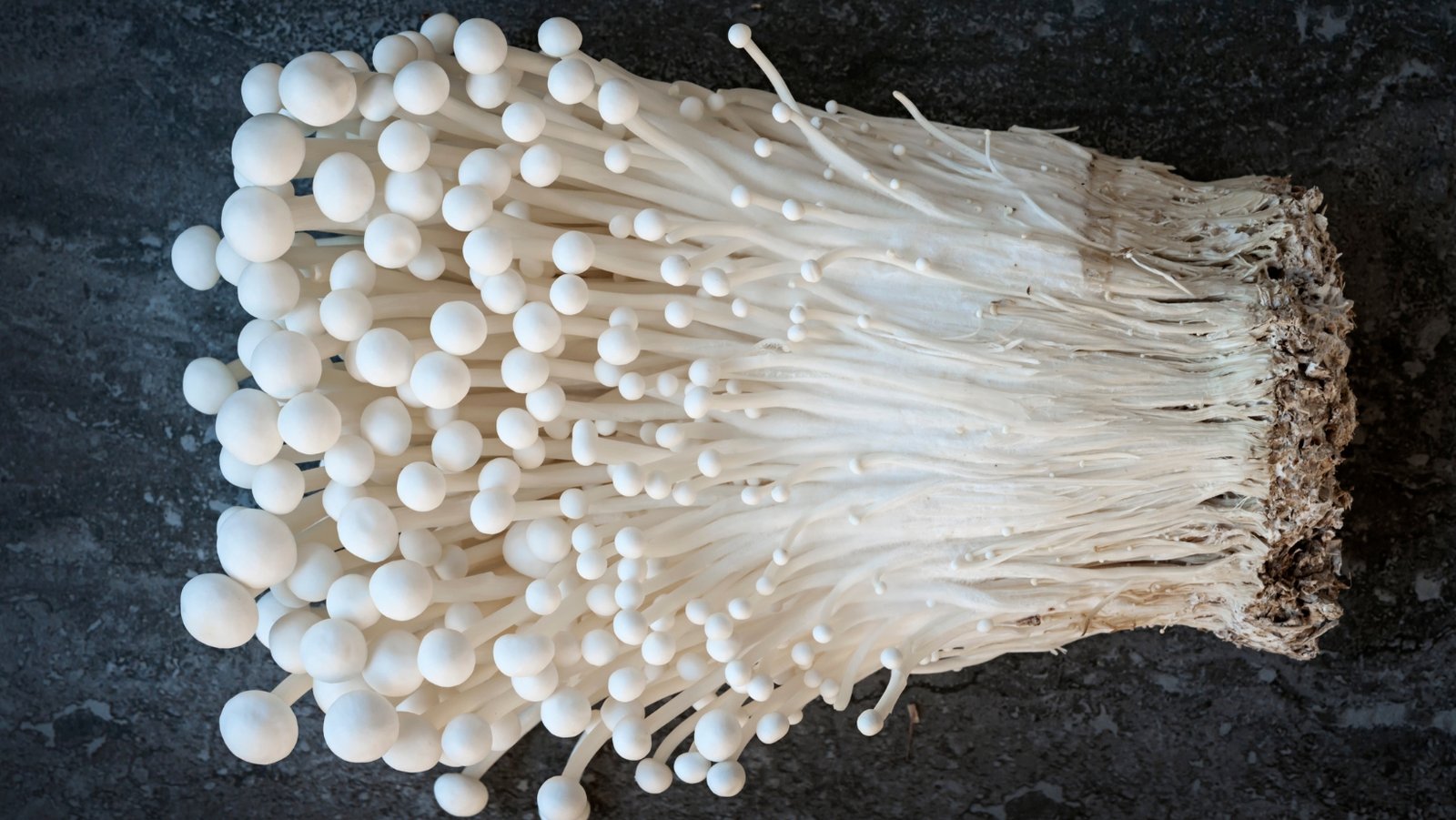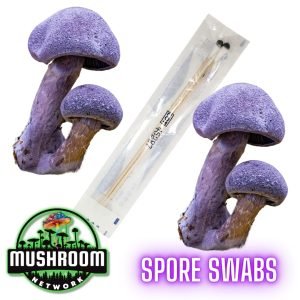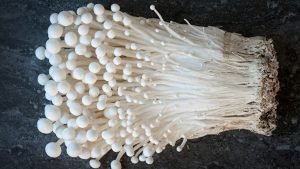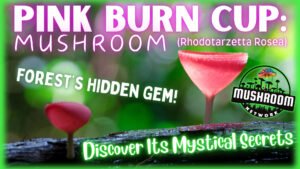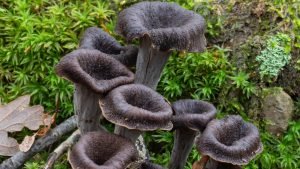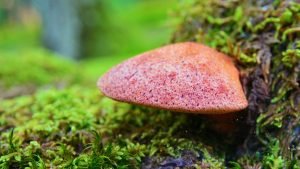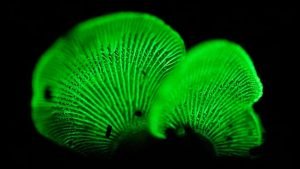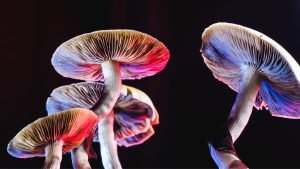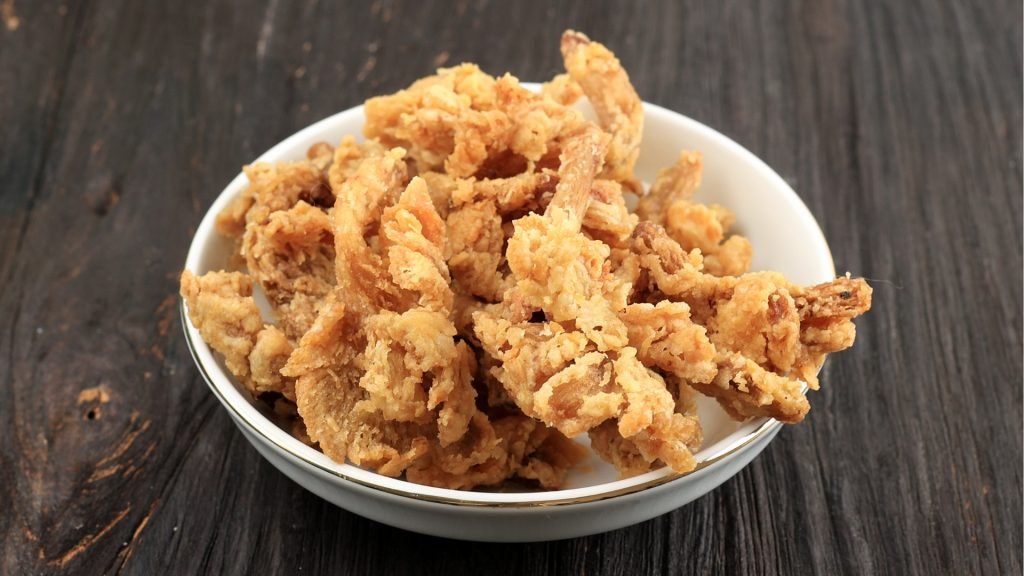Welcome to the intriguing world of the Enoki mushroom, a culinary delight and a scientific wonder. Let’s delve into the fascinating aspects of this slender, golden mushroom.
SCIENTIFIC NAME:
(Flammulina Velutipes)
COMMON NAME(S):
Enoki | Enokitake | Velvet Stem | Golden Needle Mushroom | Winter Mushroom
I-NAME:
ENOK
Founding Mycologist/Discovered By:
The Enoki has been a part of East Asian cuisine and culture for centuries. While its formal scientific description was provided by the Dutch botanist Christiaan Hendrik Persoon in 1794, its discovery and use predate recorded history in Asia.
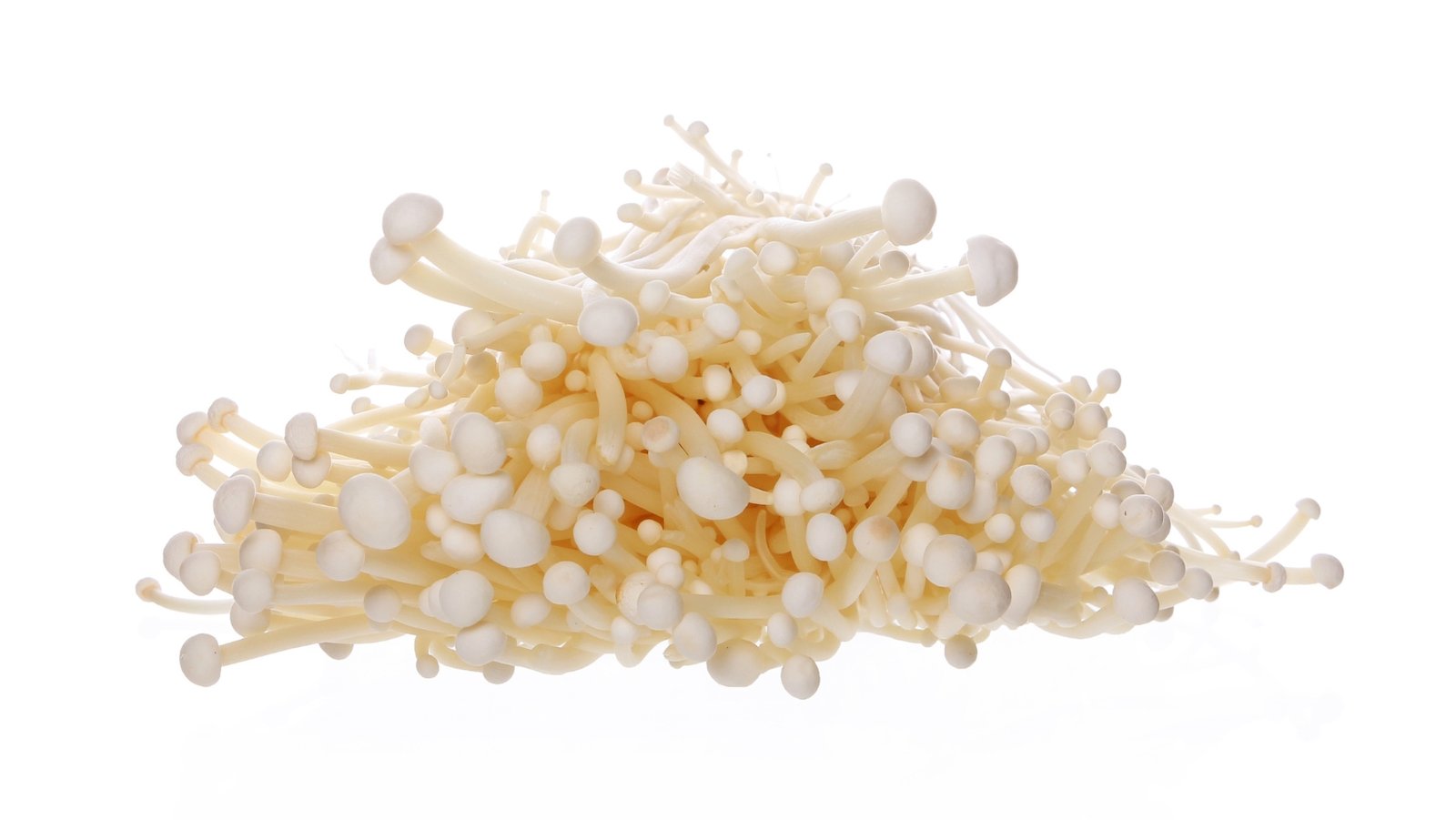
RECOMMENDED TEMPERATURES
Colonizing Temps:68° – 77°F | Fruiting Temps:45° – 59°F |
SPORE COLOR:
WHITE to PALE-YELLOW
Discover the unique characteristics and diverse applications of the Enoki mushroom, a staple in Asian cuisine and a subject of recent scientific studies. Enoki mushrooms are perfect for culinary enthusiasts and researchers interested in their unique properties and growth patterns.
DESCRIPTION:
Enoki mushrooms are distinguished by their long, thin stems and small, convex caps. They exhibit a striking golden color when cultivated commercially, while wild types tend to have a darker, velvet-like stem. Enokis have a mild, slightly fruity flavor and a crisp texture, which makes them a delightful addition to many dishes.
INTENDED USES:


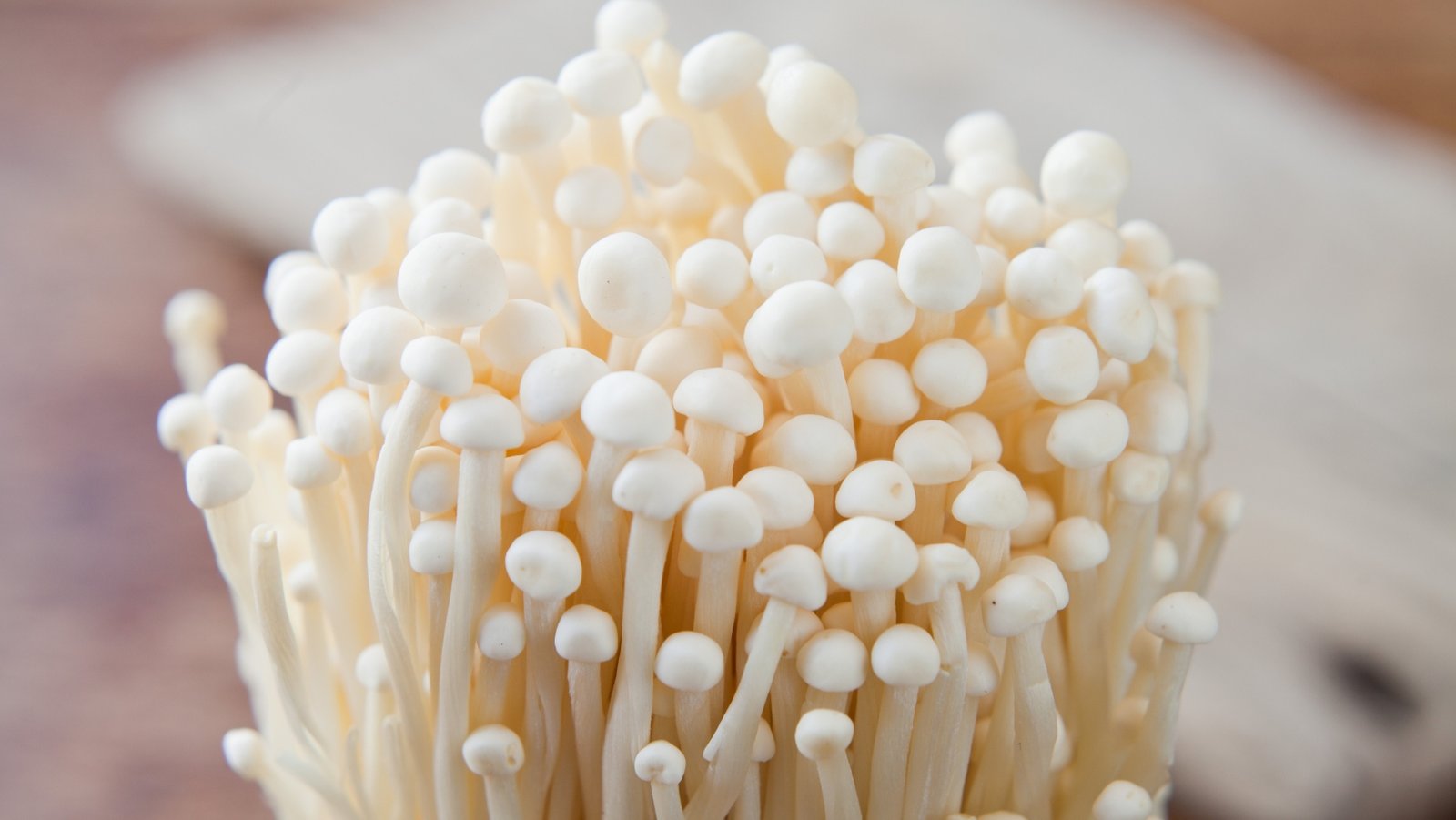
HABITAT AND DISTRIBUTION:
Naturally, Enoki mushrooms grow on the stumps of trees, particularly elms, in various parts of Asia, Europe, and North America. They thrive in cool temperatures and high humidity, making them a common sight in temperate forests during late fall to early spring.
ECOLOGICAL ROLE:
In their natural habitat, Enoki mushrooms play a crucial role as decomposers, breaking down the lignin in deadwood and recycling nutrients back into the ecosystem. Their presence indicates a healthy forest ecosystem.
GROWTH AND CULTIVATION:
Enoki mushrooms are relatively easy to cultivate, making them popular among home growers. They require a high humidity environment and thrive on a variety of substrates, including sawdust, grain, and wood chips. Temperature control is crucial for achieving the desired slender and elongated form.
HISTORICAL & CULTURAL INFO:
Enoki mushrooms have a rich cultural history, particularly in Japanese and Chinese cuisines, where they have been used for centuries in soups, stir-fries, and salads. They are celebrated for their health benefits and are often associated with longevity and vitality in Asian cultures.
GENETIC LINEAGE/HISTORY:
The genetic lineage of Flammulina Velutipes is being studied to understand its adaptability to different environments and its potential medicinal properties. This research is contributing to the broader understanding of fungal genetics and cultivation.
CHEMICAL COMPOSITION:
Enoki mushrooms are known for their rich nutritional profile, including high levels of vitamins, minerals, and dietary fiber. They also contain antioxidants and compounds that have been studied for potential anti-inflammatory and immune-boosting properties.
MEDICAL PROPERTIES (if applicable):
Recent studies have explored the potential medicinal benefits of Enoki mushrooms, including their role in boosting immune function, reducing cholesterol levels, and their potential anti-cancer properties.
CULINARY USES (if applicable):
Enoki mushrooms are a versatile ingredient in cooking. They can be used in soups, salads, stir-fries, and as a garnish. Their mild flavor and crunchy texture make them a favorite in many Asian dishes, such as hot pots and noodle soups.
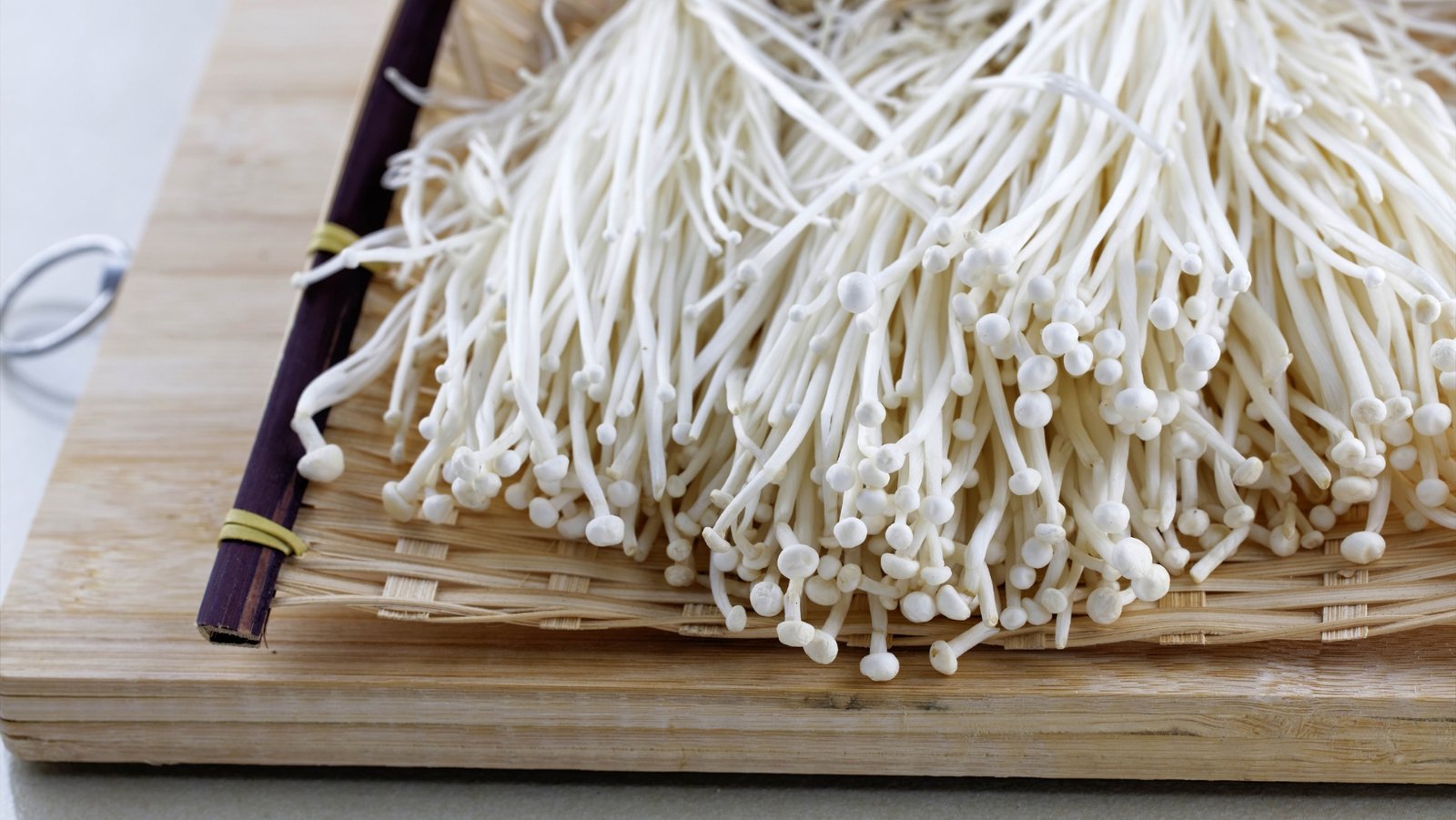
CAUTIONS & WARNINGS:
While Enoki mushrooms are generally safe to eat, it is essential to source them from reliable suppliers to avoid contamination with harmful bacteria. Cooking Enoki thoroughly is recommended to ensure safety.
FINAL CONSIDERATIONS:
Whether you are a culinary enthusiast or a mycology researcher, the Enoki mushroom offers a world of possibilities. Explore the rich flavors and scientific wonders of Flammulina Velutipes in our Mushroom Marketplace.
Don’t forget to check out the 🍄 Mushroom Network’s Marketplace to see what’s available. But hurry, our shelves are constantly evolving, and you wouldn’t want to miss out on this wonderful mushroom. Join our growing network of Patrons, Genetics, and Mycologist Vendors only on the 🍄 Mushroom Network!
No posts found!
FAQs:
Yes, with the right conditions of humidity and temperature, they can be easily cultivated at home.
While they can be eaten raw, cooking them is recommended to enhance flavor and ensure safety.
They are known for boosting immune function, containing antioxidants, and potentially reducing cholesterol.
Wild Enokis have a darker color and a stronger flavor, while cultivated ones are lighter and more delicate.
They are popular in Asian cuisine, especially in soups, stir-fries, and hot pots.
MYCO-CLOSINGS:
As we close our exploration of the Enoki mushroom, remember that every mushroom has its unique story and flavor. Keep exploring, keep tasting, and let the 🍄 Mushroom Network be your guide in the fascinating world of fungi!
Related Articles:
Enoki (Flammulina Velutipes)
Welcome to the intriguing world of the Enoki mushroom, a culinary delight and a scientific...
Read More...Other Mushroom Species To Research:
Pink Burn Cup (Rhodotarzetta Rosea)
Welcome, dear mycophiles and curious minds, to our Pink Burn Cup (Rhodotarzetta Rosea) Data Page!...
Read More...Black Trumpet (Craterellus Cinereus)
Greetings, fungal aficionados and nature lovers! Today, we embark on a fascinating exploration of Craterellus...
Read More...Beefsteak Mushroom (Fistulina Hepatica)
Welcome, fungal enthusiasts and curious minds, to an exploration of Fistulina Hepatica, commonly known as...
Read More...Enoki (Flammulina Velutipes)
Welcome to the intriguing world of the Enoki mushroom, a culinary delight and a scientific...
Read More...Other Recommended Reads:
Bioluminescent Dreams: The Magic of Glowing Mushrooms
About This Article: Step into the world of glowing forests with ‘Bioluminescent Dreams.’ 🍄💡 Discover...
Read More...Bitter Oyster (Panellus Stipticus)
Welcome, esteemed mycologists and curious minds! Today, we delve into the intriguing world of Panellus...
Read More...KSSS vs. Psilocybin Cubensis: A Mycelial Marvel Matchup
About This Article: Who wore it better: KSSS or Psilocybin Cubensis? Dive into the ultimate...
Read More...Substrate for Mycology: A Comprehensive Guide on Using Cardboard
An often-overlooked resource, cardboard not only encases our goods but also serves as a treasure...
Read More...Whoa there, Spore Sport! 🍄 Looks like you’re not logged in yet. Don’t you know what you’re missing? MYCO-CREDITS! Imagine all the fungal fun you could have. It’s like finding a Morel in May and not picking it. Tragic, right? Log In or Become a Myco-Patron and start racking up those credits. It’s more rewarding than finding a mushroom in your backyard! 🌟🏡

